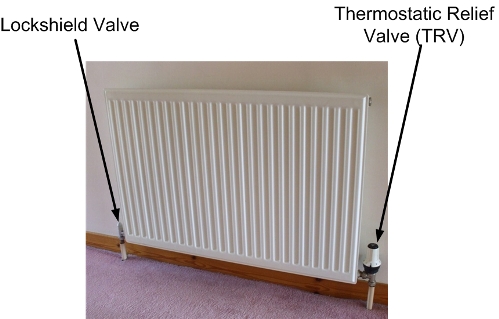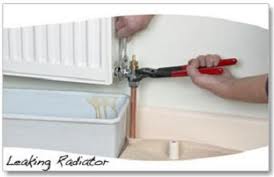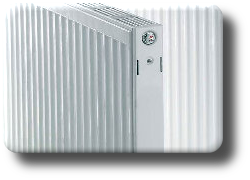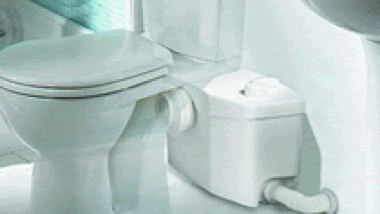We offer to provide a professional service to Repair Radiator Leaks in Shrewsbury and throughout Shropshire, but if you wish to accomplish a DIY job we have added a video and a transcript for your information and use below. The job is not easy to do if you have no experience, also the problem may not be related to your radiator valve, so we recommend that you call us on [phone] for a quote:
Video on How to Repair Radiator Leak Problems – Applicable to Repairs in Shrewsbury Shropshire
If you’ve been fortunate enough to stumble on this video which is all about how to repair radiator valves, then excellent, we’re gonna get down to that any minute.
Anyhow, I hope you take pleasure in today’s video and hold tight. Certainly, you’re here due to the fact that you’ve got a dripping radiator valve like the one we’ve got here. This is called a lockshield valve, and they’re truly, truly simple to repair if you’ve got a little leakage on ’em.
Without more ado, let’s see how we can stop your radiator valve from dripping.
Here’s exactly what a basic radiator valve looks like when it’s in situ on the radiator. We can leakage on the thread of this insert as it goes into the radiator.
We can see leakage on the nut and olive here where the body of our radiator valve goes into the insert of radiator.
We can also see leakage on the nut and olive simply on here as well. That’s on the pipeline that comes up into the radiator valve. What you have here is a radiator insert with a male half-inch thread on it going into a female half-inch thread on your radiator.
Steps to Repair Radiator Leak Shrewsbury
Shut off the radiator valve at each end of the radiator. You do that by turning the radiator valve clockwise, or as we call it in the trade, righty tighty.
This goes the exact same for if you’ve got a thermostatic radiator valve on the radiator.
The next thing you want do to make is to make sure that the 2 isolation valves are holding either side of the radiator.
 Get yourself a radiator bleed tool and simply slack off the radiator bleed at the top of the radiator. Ideally water needs to stop dribbling straight away.
Get yourself a radiator bleed tool and simply slack off the radiator bleed at the top of the radiator. Ideally water needs to stop dribbling straight away.
You should not get a lot of water out, and next I’ll explain exactly what you require to do when you’ve opened this nut off here.
Get your adjustable spanner on this hex nut here and begin relaxing it.
Relax it and expose and attempt 4 or 5 threads at least, and then as quickly as you’ve got those threads exposed, you cover your PTFE round.
Now, you can clearly see there that I did the safe alternative and exposed simply 3 or 4 threads, possibly 5 threads.
If you want to let the whole of the radiator wall out of this radiator simply here, you can entirely get rid of the insert if you like, and then work with that on your lap.
The thing is, as soon as we’ve got this out here, you can get all the old sealant off here, and pop your brand-new sealant on.
We’ve put our sealant back on now.
All you have to do is simply re-screw in our insert. Tighten up the nut and olive using our grips and our adjustable spanner, and we must have the ability to turn the water back on and make sure that we’ve sealed up effectively that radiator insert there.
The next leakage most likely you may have is on this nut here. The very best thing to do is close down the valves at each end of the radiator, then apply a bleed. This is essential to to make sure that those valves are holding.
The action is similar to that which we performed in the very first bit.
Normally, exactly what you’ll require to do is get yourself some PTFE , wrap that round the olive. We’re putting it on in a method that suggests that when we tighten our nuts up, it’s not going to unwind our PTFE tape.
Next, remake the joint and union once again by getting the body of the valve and then tightening up the nut up again.
Now, the 2 repairs for the leakages we’ve already done there were simple. This is a great method, due to the fact that they’re exactly what I call the dead side of the radiator. They’re on the side of the radiator, and you can turn the valves off, and isolate the radiator from the rest of the heating system. It’s easy, due to the fact that you’ve got the radiator valves there to do it.
Due to the fact that if you’re not adequately experienced in this and you do not understand exactly what you’re doing, you will need to drain the entire heating system out.
Exactly what you are best doing is set yourself up first, so if you do begin to get a leakage, it will not amount to much water and will not run the danger of destroying your decorations.

The best thing idea is also to get a couple of towels laid out. Maybe you should also get a couple of buckets, or plastic sink basins, laid out as well.
That way you can capture any water while you’re working on it.
You’re gonna reverse this nut here, expose the olive by raising the valve up a little bit. You may even require to raise the entire radiator.
If you do that, you’re gonna get a good little water fountain of water, and it’s most likely going to overflow your little bucket you’ve got ready to capture it.
Do understand that if you do let quite a great deal of water out and you’re on a pressurised system, you’re going to have to think of topping up the pressure of your central heating system.
While this repair is a great DIY repair concept, I will say that if you’re doing any work to a heating system switch it all off first, to prevent the heating system running.
The last part of the leakage job that you require to repair on a radiator valve is really on this nut here.
This specific repair works for a lot of types of TRVs as well, where you’ve got the numbers on the side and the twiddly bit. Anyhow, we’ve got our top off here currently.
So that was the “Jenson Button” speed of repair, which is the slower one, and the “Lewis Hamilton” one, which is a bit quicker and perhaps will get you in the lead with your pipe maintenance jobs.
Anyhow, the very first one is, you simply get the nut here, this is the gland, the packaging gland, and you simply tighten up that up.

If you simply tighten up that up by going righty-tighty, do not go definitely psychologically crazy-hard with it, since the tighter they are, the more difficult it is in fact to turn the valve on and off.
The best action you can do is shut the valve itself, get your packaging nut, and simply reverse that completely and take that away.
I’ve got loads of these little mini-olives, loads of various types of sizes, and they’re normally the finest method to do that, however, you’re not going to have that advantage.
What you’ll wish to do is get yourself some PTFE tape, and simply cover that all round the gland like so.
And then, you ought to be able to open up the valve once again, wind over the thread, make sure the thing is dry and great, test for leakages. That should be it.
We hope that has given you a much better concept of how best to repair any leakages that you may have on your radiator valve.
Remember exactly what I stated about that bottom nut, they’re not simple due to the fact that they’re on the live side of the system, and you’ve gotta believe about draining pipes down.
Also note and act on my words about dealing with the system and replacing the inhibitor fluid in the whole central heating system, and making sure that whatever you have done works all right.
As found on Youtube, but call us if this confuses you and we’ll give you a quote for the taks to repair a radiator leak in Shrewsbury and Shropshire.




